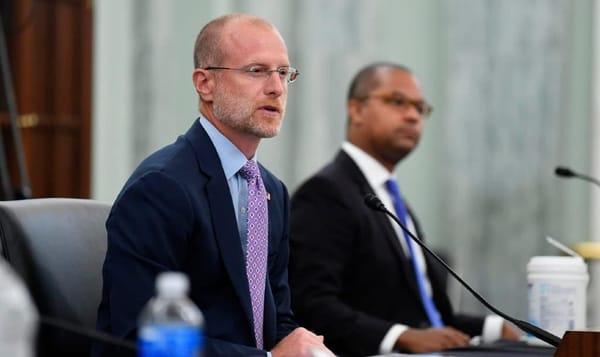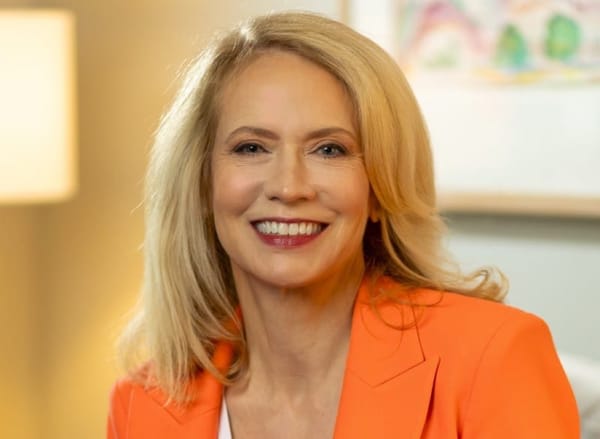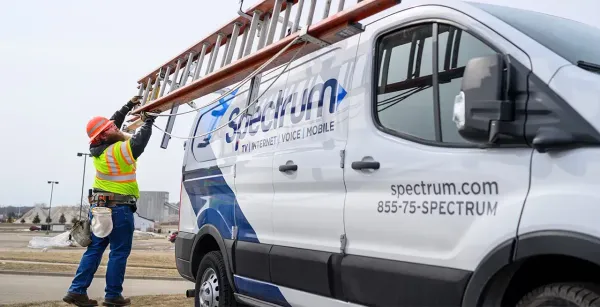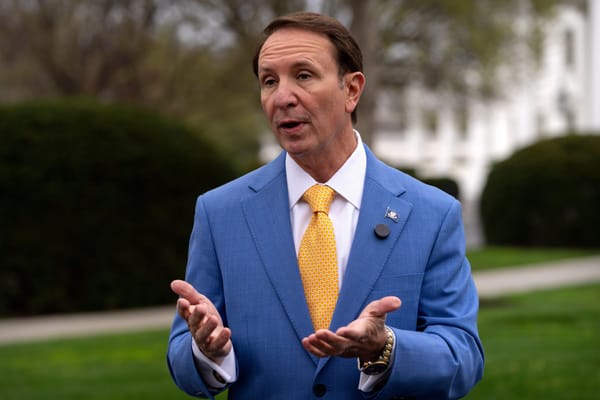Exclusive Series: Municipal Broadband and Open Access
More than a third of the 700 communities served by municipal broadband do so with an open access network.
Jericho Casper

Editor's note: This is the second of a four-part series on open access networks in the lead-up to Digital Infrastructure Investment on Thursday, September 19: 'All-in' on Open Access.
WASHINGTON, September 16, 2024 – In the United States, before there were extensive broadband open access networks, there were simply municipal broadband networks. As the number of municipal networks has exploded, open access networks are a big share of that growth.
A map released Thursday by the Institute for Local Self-Reliance identified 269 communities served by “63 unique municipally-owned open access networks operating across the United States,” Ry Marcattilio-McCracken, associate director for research at ILSR, told Broadband Breakfast on Friday. “Of those, 47 communities are covered citywide.”
Overall, according to the report, a total of 700 communities are now served by more than 400 networks, up from 130 networks covering a similar number of communities in 2011.
And more than a third of those municipal broadband communities offer open access networks to their citizens.
Between 2001 and 2008, an average of six new municipal networks came online per year. Contrast that with the last 10 years, which has seen that average jump to 15 new networks per year – even when accounting for the initial slowdown in pace of deployment caused by the Covid-19 pandemic.
The Covid-19 pandemic caused a rethink by municipalities
Of the 63 municipal open access networks, 18 have been spurred on by federal Covid-19 relief funding from the American Rescue Plan Act and its Capital Projects Fund, which allocated federal resources for communities to invest in their broadband infrastructure.
Exclusive Broadband Breakfast Series on Open Access Networks:
Part 1: Overseas Strength in Open Access
Part 2: Municipal Broadband and Open Access
Part 3: AT&T, T-Mobile Bet Big on Open Access
Part 4: Big Money Moves Forward with Open Access
In fact, after Covid-19, open access picked up steam as communities warmed to the idea that owning some aspects of internet infrastructure – without having to operate as an internet service provider – could give cities more control without being ISPs.
In an open access network, the owner of the network and the network are different from the ISPs offering services to end-user customers. A three-layered open access network may be particularly suited to municipalities. In such a model, the municipality is the asset owner, with a separate network operator on the wholesale network, and an additional division between the network operator and multiple ISPs.
 Broadband BreakfastTeralyn Whipple
Broadband BreakfastTeralyn Whipple
The open access concept isn’t entirely new for municipalities: Danville, Virginia, launched one of the first city-owned open access networks in the early 2000s. UTOPIA Fiber launched its open access network in 11 cities in Utah in 2002.
Recent developments in municipal open access networks
But municipalities building broadband networks are becoming even bigger fans of the open access model after seeing successes in lowering barriers to entry for smaller ISPs, enhancing competition, and offering residents more diverse choices for faster, more affordable broadband.
ARPA proved particularly helpful to post-pandemic efforts. At least nine open access projects planned or considered using ARPA funds.
One such project began in 2021, when Superior, Wisconsin city officials approved a $31 million plan to build a city-owned open access fiber network project, dubbed Connect Superior. The pilot phase, costing $2.26 million, was paid for with the help of $5 million from the city’s $17 million ARPA allocation. This initiative may have influenced Superior’s neighbor Duluth, Minnesota, to explore a similar project.
In another post-COVID build, Cleveland, Ohio, has neared completion of a citywide open access fiber network funded by $20 million in ARPA funds, to offer residents 100 Megabit per second (Mbps) service for $18 per month.
In Eagle, Idaho, the city connected its first residents to a new municipally-owned open access fiber network in February 2024. Heavily funded by federal grants, the network is expected to expand to serve the city’s 32,000 residents, offering them access to multiple ISPs at competitive prices.
 Broadband BreakfastJake Neenan
Broadband BreakfastJake Neenan
And, just 55-minutes away, Mountain Home, Idaho also used ARPA funding to develop its open access city-run fiber network, with the goal of boosting speeds and lowering prices by 25-35% for all residents.
In Ammon, Idaho, one of the early pioneers of open access networks in the U.S., ARPA funding was used to extend its fiber network into underserved areas. Meanwhile, the neighboring city of Rexburg used ARPA funding to construct a 20-mile open access fiber backbone to connect municipal facilities, with plans for residents and businesses to benefit from the new infrastructure by November 2023.
Still more plans to bring county-wide open access networks, as announced in Allegan County, Michigan, Los Alamos County, New Mexico, and Alpine County, California, signal that the rapid growth of open access networks shows no signs of slowing down.
Open access driven by regional partnerships and quasi-governmental entities
Certain regions in the U.S., particularly Utah and Washington, have embraced the open access model on a large scale.
UTOPIA Fiber, the Utah Telecommunication Open Infrastructure Agency, stands out for its growth. It’s an interlocal agreement among cities that operates independently and entrepreneurially in delivering community-owned fiber networks. Residents can choose from 15 private-sector ISPs.
In 2023, the provider network completed five city buildouts and surpassed 60,000 subscribers. That year, UTOPIA placed 2.7 million linear feet of fiber, connecting over 23,000 homes, 1,200 businesses, 41 homeowner associations, and adding more than 8,200 new residential subscribers.
 Broadband BreakfastDrew Clark
Broadband BreakfastDrew Clark
Since its inception, UTOPIA has built and operated nearly half-a-billion dollars’ worth of fiber-to-the-home projects in 21 cities across Utah. It has also extended its business-class services to 50 cities throughout the western U.S., further demonstrating the scalability and impact of the open access model.
Although the “owners” of the UTOPIA Fiber network remain the 11 cities that created the entity, the open access network now serves a total of 22 different communities, sometimes with variations in the specific ownership or business model.
The model of Washington State’s public utility districts
In Washington State, Public Utility Districts (PUDs) have taken the lead in building open access networks that serve rural and underserved communities. A prime example is the Northwest Open Access Network, or NoaNet, a public-benefit wholesale telecommunications organization that supplies broadband solutions via open access across the Pacific Northwest.
NoaNet, formed in 1999, has become one of the region's most significant open access networks. By 2015, NoaNet had expanded to manage over 3,000 miles of fiber, delivering essential broadband services to ISPs, schools, libraries, and government institutions.
 Broadband BreakfastJericho Casper
Broadband BreakfastJericho Casper
Several Washington PUDs are simultaneously advancing their own open access initiatives. Whatcom County PUD, for instance, received $3.15 million in ARPA funding to develop an open access network to serve an underserved, rural enclave in the county, only accessible through Canada.
Nearby, Lewis County PUD celebrated connecting its first broadband customers on September 6 to the grant-funded, open access, fiber-to-the-premises project which had been in the works since 2021.
By delivering open access fiber to rural areas, Lewis and Whatcom County have given residents access to high speed competitive internet options that would not have been possible without local ownership and public funding.
Possible changes in the U.S. open access landscape
Despite the growing scale of municipalities in open access networks, they do face challenges, including opposition from telecom incumbents, some of whom have lobbied against municipal broadband and fund misinformation campaigns, such as the recent attack on UTOPIA Fiber.
Additionally, legal barriers in many states restrict or prohibit the development of municipally-owned networks. Open access can sometimes be a way around such restrictions: UTOPIA Fiber exists in one of the states with a restriction on municipalities offering broadband services themselves. But such restrictions can still dampen open access, too.
In May, Minnesota repealed two such state laws, reducing the number of states with restrictions preventing local governments from building their own broadband networks to 16.
Municipalities may have started the open access ball rolling in the United States, but the private sector is clearly closely on its heels – including increased involvement by Tier 1 players, and a range of private equity and other financially-based venture investments in wholesale and open access networks.
Those will be discussed in the concluding two articles in this series in advance of Digital Infrastructure Investment on Thursday, September 19, 2024:
 Broadband BreakfastBroadband Breakfast
Broadband BreakfastBroadband Breakfast
Open access networks are gaining greater traction nationwide. In additional to major players entering the market, existing open access entities are thriving, as more cities and regions are committing to open access. Under this model, multiple ISPs can offer services over the same broadband infrastructure. The promise is greater innovation and competition, and easy entrance into the market for some.
Exclusive Broadband Breakfast Series on Open Access Networks:
 Broadband BreakfastDrew Clark
Broadband BreakfastDrew Clark
 Broadband BreakfastJericho Casper
Broadband BreakfastJericho Casper
 Broadband BreakfastJericho Casper
Broadband BreakfastJericho Casper
 Broadband BreakfastJericho Casper
Broadband BreakfastJericho Casper
Digital Infrastructure Investment
Join the Breakfast Club to watch Summit videos
Benefits of Breakfast Club Membership









Member discussion